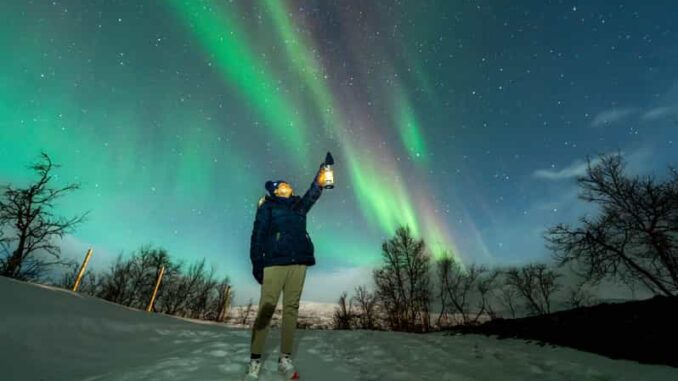
As we dive deeper into the late autumn months, the aurora borealis – also known as the northern lights – is once again gracing the skies, captivating skywatchers across the Northern Hemisphere. The evenings of November 23 and 24, 2024, promise to deliver an exceptional auroral display, with experts predicting a powerful solar storm and heightened geomagnetic activity that will make for a spectacular visual show. In this update, we’ll take a closer look at the expected solar conditions, key viewing locations, and tips for experiencing the aurora at its best during these two nights.
The aurora borealis is a natural phenomenon caused by charged particles from the Sun colliding with atoms in Earth’s atmosphere. When these particles are directed towards the Earth’s magnetic poles, they create a colorful, dynamic light display. Over the last few days, solar activity has been on the rise, and forecasts predict that a moderate to strong geomagnetic storm will peak around November 23, with conditions favorable for aurora viewing continuing into November 24.
This geomagnetic storm is the result of a massive solar flare and subsequent coronal mass ejection (CME) released from the Sun earlier this week. The CME, which is essentially a burst of solar wind and magnetic fields, is traveling through space and will interact with Earth’s magnetosphere, sparking the auroral activity. The combination of solar flare activity and an enhanced solar wind will lead to a geomagnetic storm level of G3, which is considered a “strong” event on the space weather scale.
According to NOAA’s Space Weather Prediction Center, this level of storm can lead to vibrant aurora displays, visible from regions much farther south than usual. The aurora will likely be visible from areas like Alaska, Canada, and parts of Scandinavia, but it may also stretch as far south as northern parts of the United States, including New York, Montana, and even the northern Great Lakes. The storm will begin around 00:00 UTC on November 23 and will peak around 06:00 UTC on November 23, with auroral activity continuing into the evening of the 24th.
### **Solar Activity and Geomagnetic Storms: The Science Behind It**
Solar flares and coronal mass ejections are some of the most powerful events in our solar system. These bursts of energy and charged particles travel from the Sun, reaching Earth in anywhere from 18 hours to several days, depending on the speed of the eruption. As these particles collide with the gases in our atmosphere, they create light, resulting in the stunning aurora displays.
Solar flares, which are bursts of radiation from the Sun, and CMEs, which are large expulsions of plasma and magnetic fields, are most often associated with the solar cycle’s peak, which occurs approximately every 11 years. The current solar cycle, Solar Cycle 25, is approaching its peak, which will occur in 2025. This means that solar activity, and thus the frequency of auroral displays, is expected to intensify over the next year or two.
This particular solar storm, however, is significant because of its intensity and its timing during the fall and winter months, when the nights are long and dark. While solar flares and CMEs can occur at any time, the combination of strong solar activity and favorable viewing conditions make the evenings of November 23 and 24 especially exciting for aurora enthusiasts.

If you’re planning to view the aurora borealis during this celestial event, your best bet is to head north. Regions within the auroral oval, which is the area around Earth’s magnetic poles, will experience the most intense aurora displays. Here are some of the best places to see the aurora on November 23 and 24:
Alaska is one of the best places in the world to see the northern lights, and the aurora forecast for the nights of November 23-24 is particularly promising. Areas such as Fairbanks, known for its relatively clear skies and stable weather, offer some of the best viewing opportunities. Fairbanks lies just below the auroral oval, so it is often treated to brilliant displays, especially during geomagnetic storms like the one expected this weekend. Visitors should head out of town to avoid light pollution and get a better view of the aurora.
The northern regions of Canada, particularly the Yukon, Northwest Territories, and parts of northern Ontario and Quebec, will experience some of the best displays during this geomagnetic storm. Cities like Whitehorse and Yellowknife are known for their regular and vibrant aurora sightings. The isolated nature of these locations, along with clear winter skies, makes them prime destinations for aurora hunters.
Leave a Reply